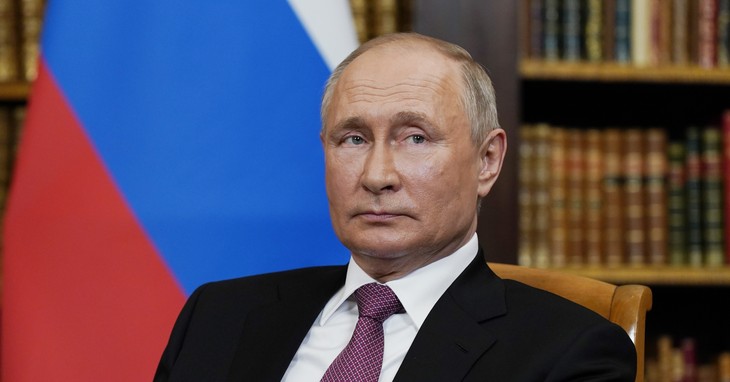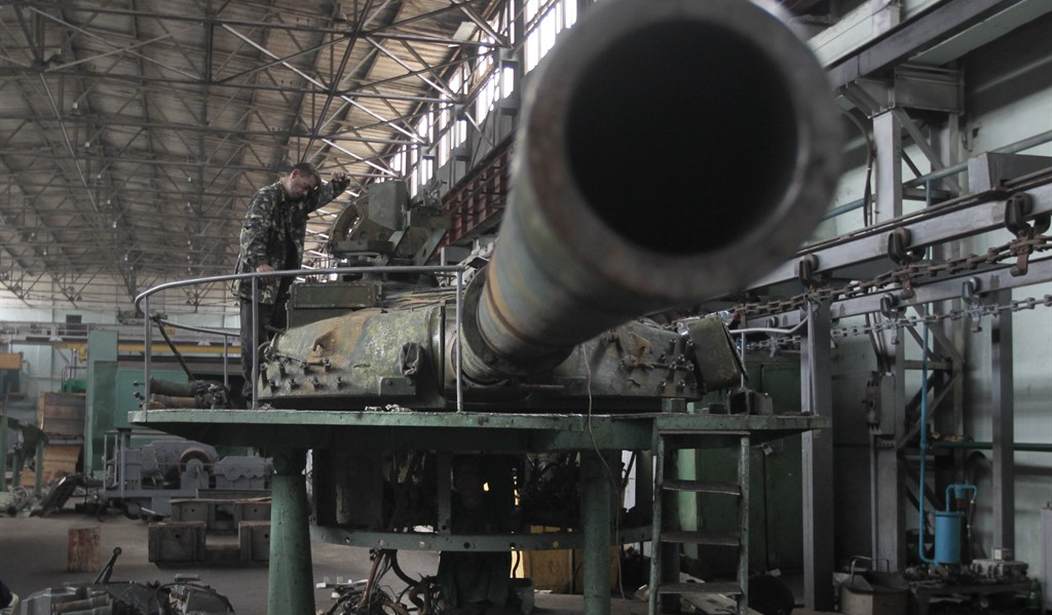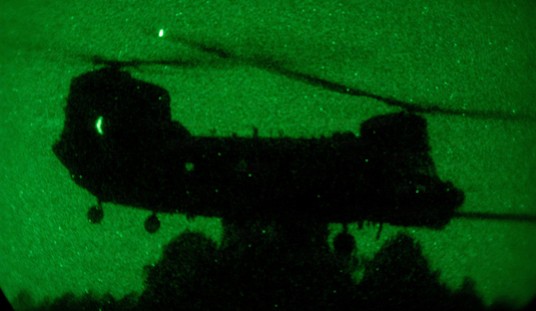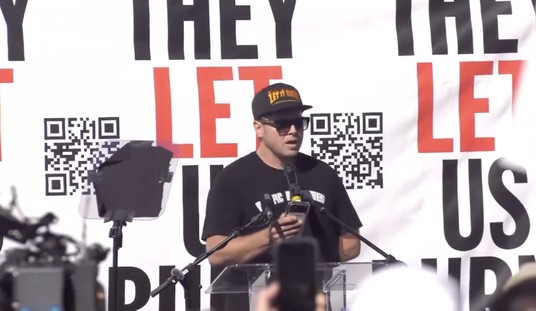Humans over the ages have come up with some ingenious ways to kill each other — brutal, but ingenious.
Thanks to GoPro and drone videos, we’re witnessing virtually real-time their use every day now as Ukraine defends itself against Vladimir Putin’s unprovoked invasion. Thousands die on both sides.
Two days ago, Joe Biden authorized the Pentagon to ship one of these lethal systems to Ukraine. They’re called cluster bombs.
As the Cluster Munitions Coalition describes them, cluster munitions are artillery shells or bombs that explode above a target, sending bomblets and shrapnel over a large area the size of a football field.
Anyone or anything in the area is shredded.
Here’s how that looks for real:
I’ve often been struck over the years by humans’ peculiar objections to how they annihilate people.
Are there nice ways to kill in war? Poison gas is out because it’s so awful. But to be honest, also because it can blow back on your own people.
Since 1945, nuclear weapons have existed as ominous threats of mass murder. Fact is, more Japanese died in the fire bombings of Tokyo than perished in the searing flash of the Hiroshima or Nagasaki atom bombs. But napalm is OK.
Primary cluster-bomb objections center on killing civilians, which only Russia targets. And on clusters’ varying dud rates that can leave unexploded bomblets widely scattered years after fighting ceases.
So, apparently, no problem if only fewer little bombs failed to kill?
The same goes for anti-personnel and tank mines. Some fields in Israel, for example, are still fenced off, with notices of live landmines remaining years after the fighting.
Biden leaves today for the NATO summit in Lithuania, where he must defend dispensing the killer weapon banned by 120 countries.
The U.S. has taken the easy way out on cluster bombs. We didn’t sign the treaty banning them. We haven’t acknowledged using them in decades.
But we have built a very large supply of them, in the many millions of bomblets. Because, hey, you never know. And many of them will soon be en route to kill Russians in Ukraine.
Also because, to be honest, we’re running out of regular artillery shells.
A desperate Russian military is already using its own cluster munitions, and judging by combat videos online, so is Ukraine.
Justifying cluster bombs is an important issue now because not all of the 30 other NATO members are good with their use. And you don’t want to create excuses for dropouts.
As with any Joe Biden public appearances, we’ll have to wait and see how he screws up his NATO presentation.
I have some quibbles about how Biden has gone about helping Ukraine. But I have no problem with his copious sharing of military aid to a new democracy struggling to stay alive.
As I’ve written, Biden and his unidentified team behind the scenes have been surprisingly good at maintaining NATO unity so far in supporting Ukraine with billions of dollars and Euros in equipment, ammo, training, and aid.
On some things, Americans are displaying a good deal of unease these days, understandable given a looming national election, inflation, bitter partisanship, and a precarious presidency emitting constant danger signals.
However, recent polls show a strong American majority supports helping the defense of Ukraine, a NATO non-member.
There is significant American self-interest in this proxy war. No aggressor in history stops conquests on their own. If they are not defeated, they continue. Exactly what my Dad taught about schoolyard bullies.
If Putin succeeds in Ukraine, his next attempted conquests could well be Poland or the Baltic States, all NATO members.
An attack on any of them is, by definition, an attack on the U.S. So, the best way to avoid an active war involving U.S. forces is to stop Putin now by proxy, spending money and equipment, not blood.

This issue is certain to flare in the GOP primaries where the top two candidates by polling – Ron DeSantis and Donald Trump – have sounded a little squishy on helping Ukraine robustly.
Some Democrats in Congress also are voicing opposition to the cluster-bomb donations.
I came up in a different generation of journalists when being professional involved dealing in facts and reining in personal feelings. Like most Americans, I tend to favor the underdog, especially if it’s scrappy, creative, and doesn’t give up.
That goes way back in our own history when, with the help of France, the ragtag colonial Revolutionary Army of George Washington used its courage and guerrilla warfare on its home soil to defeat Britain, then the world’s most powerful military force thanks, in part, to hired Hessian mercenaries.
Putin considers Ukraine part of Russia because the Tsar claimed it 200 years ago, and despite his country’s 1994 promise guaranteeing Ukraine’s territorial integrity in return for turning over its nuclear weapons.
Putin and many others expected the invasion to last only a matter of days in the face of the then-vaunted Russian military and its Wagner mercenaries recruited from prisons.
That seemed reasonable before February last year. Russia has more than three times Ukraine’s population in 27 times as much land area.
But thanks to the courage, stamina, and inventiveness of its outgunned, out-manned military fighting on home soil with donated modern Western weapons and training, Ukraine withstood the initial invasion surge and is now reclaiming captured land.
Ukraine, for instance, has used inexpensive drones carrying explosives to destroy dozens of multi-million dollar Russian tanks, missile launchers, artillery, and ammo dumps. Its sniper squads have eliminated a score of senior Russian officers.
Joe Biden is one of only four postwar presidents, most of them Democrats, who never served.
Biden is notoriously not a fan of our military. He opposed the Osama bin Laden raid. He ignored its advice in the Afghan pullout, and 13 members died. His aid to Ukraine has been copious and, in my opinion, worthy.
But it’s also been halting, often delayed for no obvious reasons, just as Biden is always inexplicably late for appointments.
It began with the amazing Javelin anti-tank missiles, which proved decisive defensively in stalling the invasion’s initial drive.
But tanks, missiles, and F-16 jet fighters were all out of the question. Biden feared Russian retribution. Then, one by one, over many months. Biden has approved each one of them anyway, including modern Abrams tanks and training.

The delays, however, created countess missed opportunities for Ukrainian advances, adding to fears of a stalemate with Russians still holding Ukrainian lands.
In congressional testimony this spring, Gen. Christopher Cavoli, Supreme Allied NATO Commander, called cluster bombs “a very effective weapon.”
He said:
We call it dual-purpose, because it releases bomblets, some of which are anti-personnel fragmentation grenades and some of which are shaped charges that attack vehicles from above.
Now, come the once unthinkable cluster bombs. In a CNN interview scheduled for today, Biden said:
It was a very difficult decision on my part. And by the way, I discussed this with our allies, I discussed this with our friends up on the Hill. The Ukrainians are running out of ammunition.
But here’s a truth that may shock Americans: So are we.
Ukraine is reportedly firing around 8,000 155-mm rounds a day. We’ve sent hundreds of thousands of rounds and thousands of Javelins, as have allies. We simply can’t keep up, as I warned here last year.
Putin, who cares not about battlefield casualties, is counting on outlasting Western leaders, who must face genuine elections. He expects them to grow impatient with the war’s costs and possible voter discontent. With Russia winning as Western support wanes.
The Taliban in Afghanistan and Communists in South Vietnam also counted on Americans’ lack of political endurance. And both were right.
So, Biden opted to send cluster bombs that we’re not using anyway, and hopes he can mollify critics in Europe and Congress without endangering allied unity.
The war in Ukraine has revealed pathetic training, strategy, and leadership in Russia’s military. The U.S. doesn’t mind depleting Moscow’s capabilities at no cost in American lives.
But the fighting has also uncovered poor supply chain situations both in the U.S. and among European allies, who allowed the Soviet Union’s 1991 demise to lull them into serious supply and equipment shortages and preparations.
Some of us recall Donald Trump bluntly urging NATO allies to step up defense investments. Turns out, our arms supply chain also took time off.
It can now take, for instance, up to two years to gear up subcontractors and assembly just of Javelins and additional years to restock U.S. inventories.
The same goes for other weapons and munitions like 155-mm shells. This isn’t the first serious supply-chain problem under Biden. Remember infant food shortages, empty grocery shelves, clogged harbors, scarce medicines? And, of course, inflation?
As this administration anticipated, everyone’s also forgotten now about Biden’s Strategic Petroleum Reserve ploy. The vast underground salt caves along the Gulf Coast were designed to hold oil for genuine national energy emergencies.
Trump had nearly filled them at cheap prices.
But Biden regarded the midterm elections as an emergency, for Democrats anyway.
To ease gas prices before 2022 voting, Biden drew down almost 200 million barrels of the reserve, vowing to refill it later. (One barrel of oil produces about 44 gallons of petroleum product.)
Oil prices are much higher now. His officials say they must wait for the costs to fall. Has anyone noticed any prices falling these days?
So, with a war raging in Europe, our emergency domestic oil reserve remains at its lowest level in 40 years.














